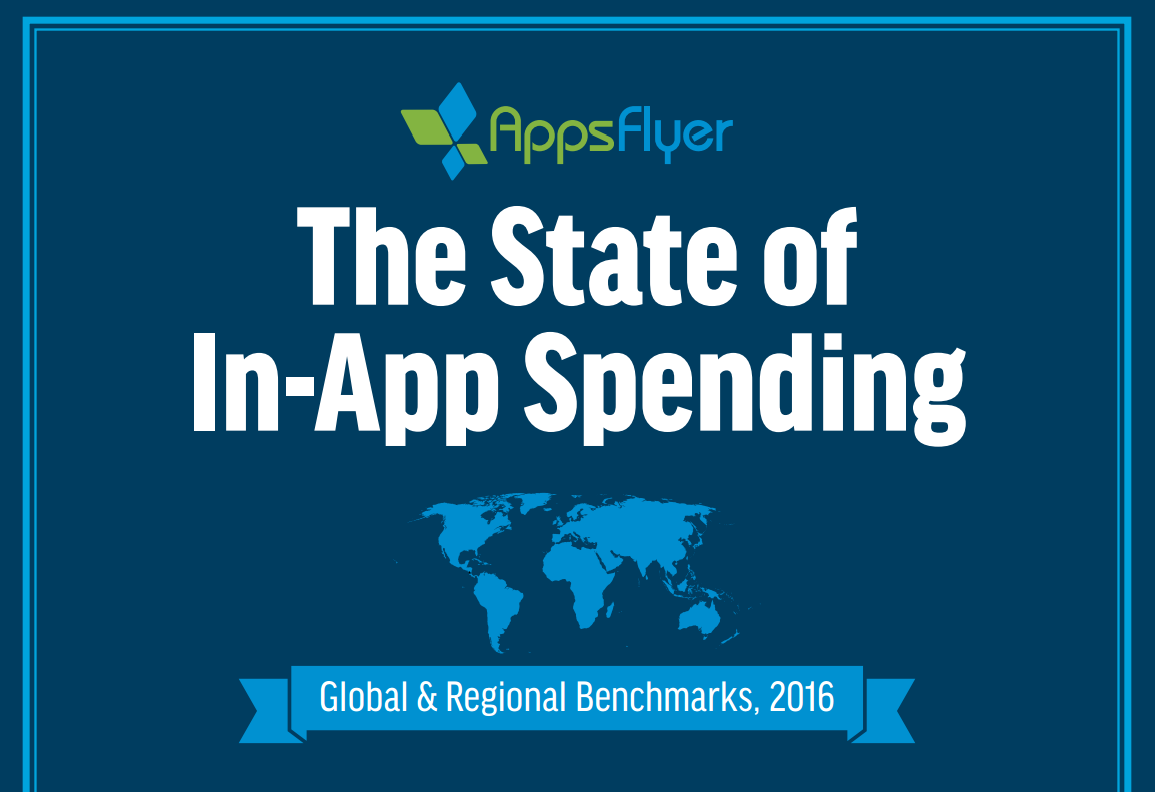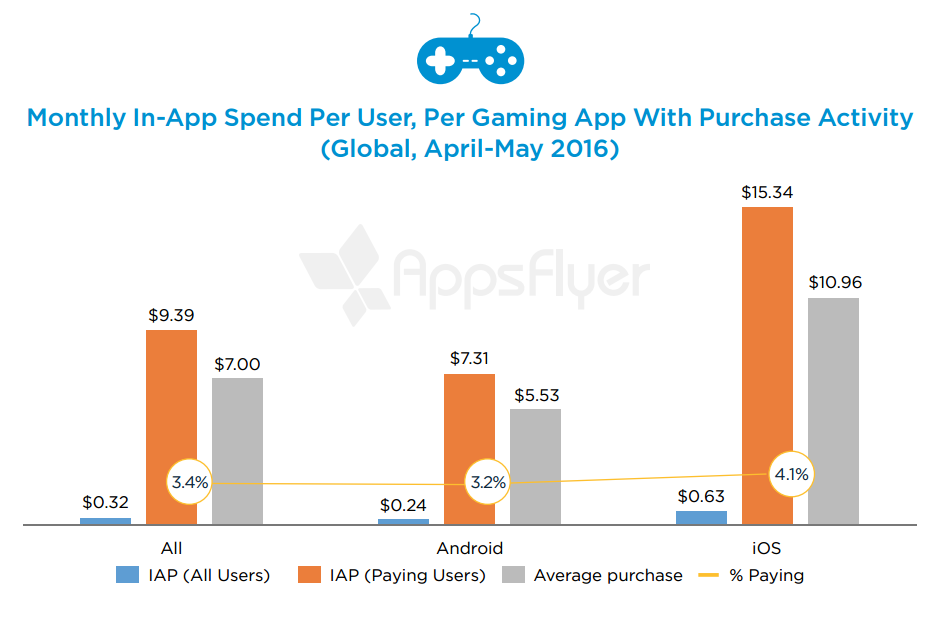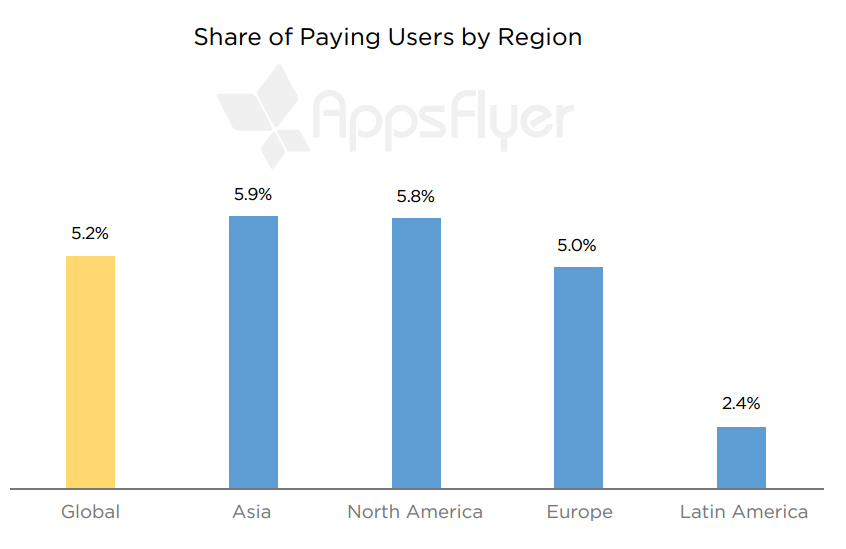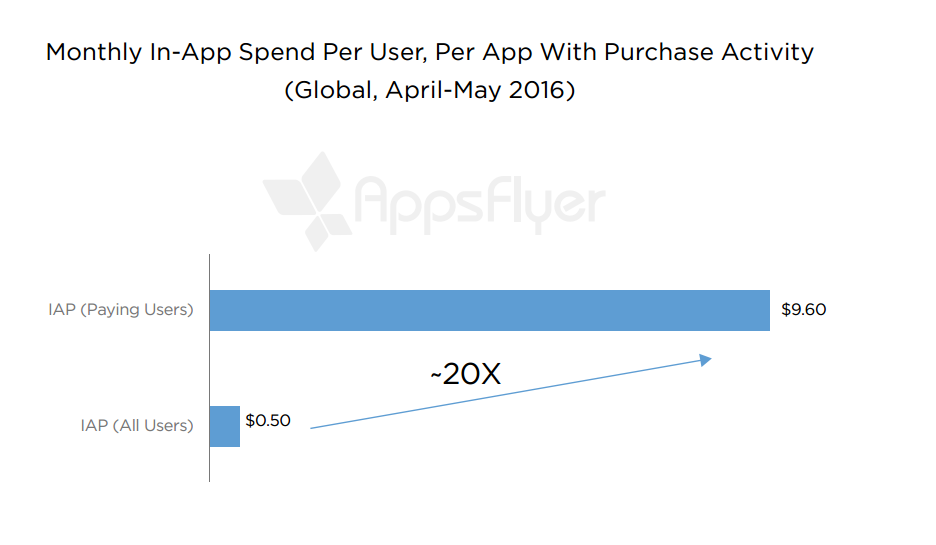Affiliate links on Android Authority may earn us a commission. Learn more.
State of IAPs: iOS users spend 2.5x more on in-app purchases than Android users
July 1, 2016

It has long been known among mobile developers that iOS apps earn more than Android apps. However, this new report from global mobile marketing attribution analytics company AppsFlyer shows us just how wide this gulf really is when it comes to IAPs. To cut a long story short, iOS users on average spend nearly 2.5 times more on in-app purchases than Android users. Ouch!
The report, called State of In-App Spending, looked at over 100 million mobile app users across more than 1,000 apps. Overall, it examined $300 million worth of in-app purchases. This is a pretty comprehensive sample, so we can confidently draw some conclusions from the results. The report also brought to light some other interesting details…
Android vs iOS
In real terms, the 2.5x difference in spending across Android and iOS equates to $1.08 vs $0.43 per user, per app in monthly IAPs. What’s more, the average iOS user is also much more likely to start spending money on in-app purchases in the first place – 50% more likely to be precise.

There are other differences too that largely seem to come out in favor of iOS developers. For example, the average purchase amount on iOS is $12.77 versus $6.19 for Android (if this sounds a lot, it’s because the data includes shopping apps). 7.1% of iOS users will also make at least one payment per month, whereas only 4.6% of Android users will.
To cut a long story short, iOS users on average spend nearly 2.5 times more on in-app purchases than Android users
Does Android get to win anything? As it happens, yes: Android users are considerably more likely to spend money on utility apps compared with iOS. There are five times more Android users spending on IAPs for this type of app; though iOS users still part with more money when they do invest in this area and will spend double the average Android user ($7.99 vs $3.82). The relative dearth of spending on utility apps for iOS is likely due to the more closed nature of iOS. Things like launchers, multitasking tools and memory boosters just don’t exist on iPhone to the same degree, meaning there are fewer utilities to be downloaded in the first place.
Unfortunately for Android developers, all other categories go to iOS – including gaming.

Regional differences
In terms of regional differences, it was found that Asian users spend 40% more on in-app purchases than other territories. So if you’re going to include in-app purchases, make sure that you don’t neglect that mobile-first Asian market!

When it comes to shopping apps however, it is North America that is in the lead with the highest spend. North America is well ahead of Europe too, spending 2.5 times more on average in shopping apps than those on the continent and 3x more than Asian shoppers. Trailing behind with the lowest IAP spend are Latin Americans, at just $0.16.

Types of app
When it comes to IAPs, shopping apps have games beat hands down. The average monthly in-app spend on gaming apps is just $0.32 across platforms, whereas it is $2.68 for shopping apps. And when it comes to shopping, physical goods will sell for much more on average than virtual goods. The average virtual product sells for $7 (which is still a healthy amount for an ebook…), versus $36.54 for physical items.
The average monthly in-app spend on gaming apps is just $0.32 across platforms, whereas it is $2.68 for shopping apps.
Interestingly, paying users are far more likely to spend money on in-app purchases compared with non-paying users. While the average user will spend just $0.50 each month on IAP (per app), paying users will spend $9.60 per month. This might well be due to the different nature of paid apps versus free apps, or there might be more psychology going on as users are willing to invest more once they’ve already put down some cash. Of course it could also be that those willing to pay for apps are simply happier to spend money on mobile in general.

When it comes to gaming, the ‘whale phenomenon’ is in full effect. This refers to the trend where gamers aren’t very likely to spend money on IAPs (only 3.5% do) but the ones that do are ‘whales’ in that they will spend a lot of money. The 3.5% of gamers happy to spend on IAPs will go on to spend 30 times more than the average gamer overall at $9.39 to $0.32 a month.
Using this information
There’s a lot to take in here but the key points covered are:
- iOS users spend more on IAPs (no surprise)
- The one area where Android out-performs iOS is in utility apps
- Shopping apps make the most money
- Physical goods sell for more than digital goods
- North Americans spend the most on shopping apps
- China spends the most on IAPs
- Gamers that are willing to pay for IAPs are ‘whales’
- Paying users will go on to spend even more on IAPs
The report also talks more generally about the importance of thinking about revenue in terms of the ‘LTV’ – Life-Time Value – of a user rather than simply in terms of quick sales.
Use this information to guide your business models and marketing decisions as a developer. If you’re looking to make money from IAPs, think carefully about the region you’re targeting, the type of user and the nature of the app.

Keep in mind that these are just numbers though. There are always exceptions to the rules and if you are savvy then you can beat the odds. Often this means finding smaller demographics to target that are willing to spend a little bit more, or building your own audience and establishing trust. Ultimately, the best route to success is still always building the app that you most want to make – statistics or no!
You can check out the full report yourself here. Or why not read about the other differences between Android and iOS development?
Thank you for being part of our community. Read our Comment Policy before posting.